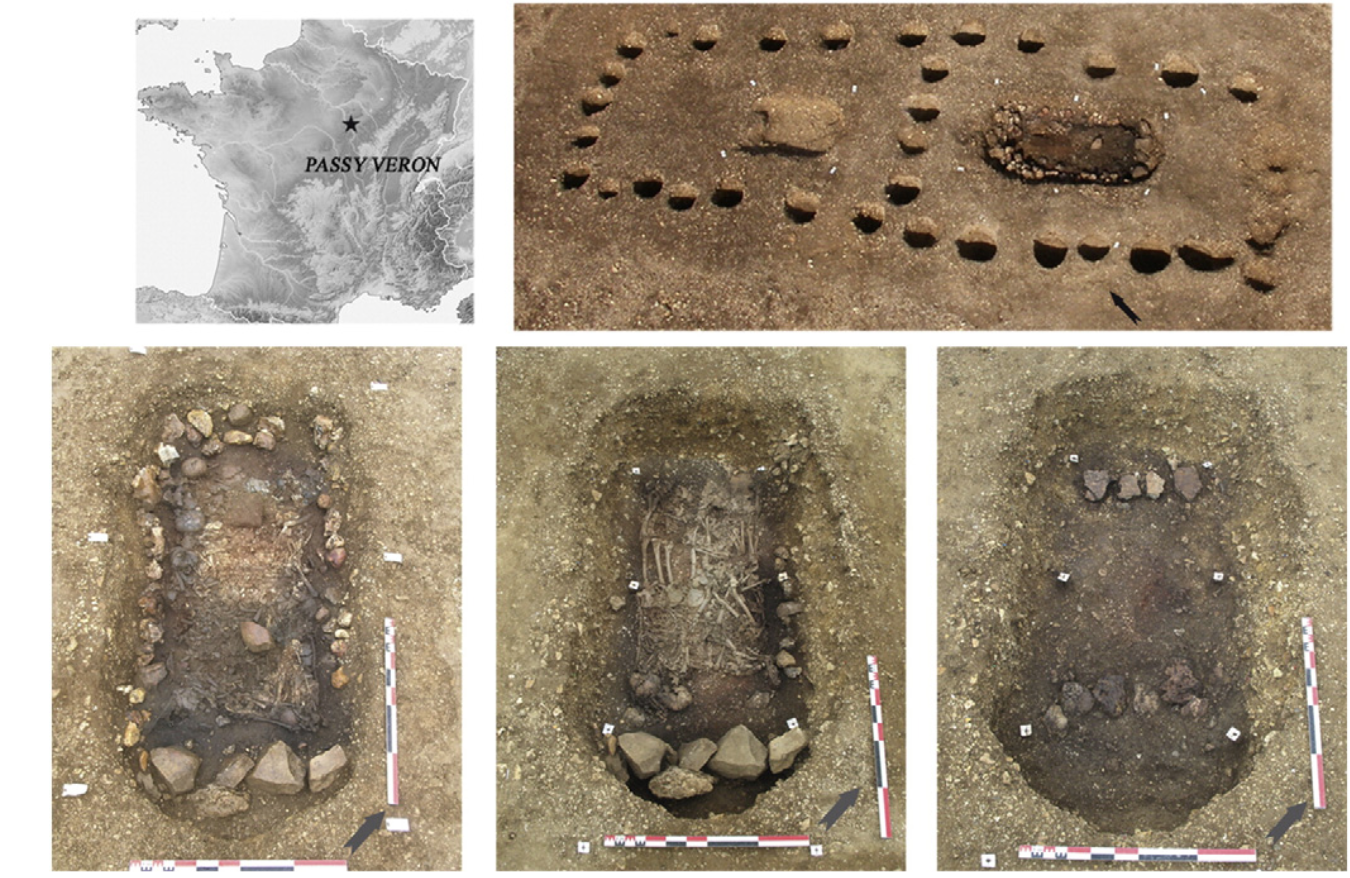Truie Pendue
- Period: Middle to Late Neolithic
- Location: France
- Burials: 65 individuals
- Archaeologists:C. de Becdelievre, S. Thiol, F. Santos, & S. Rottier
- Related Keyword/Categories: Cremation, Inhumation, Funerary Practice

The study examines remains found at the Truie Pendue site in France, dating from the Middle to the Late Neolithic periods. Excavations revealed three inhumation burials and a mortuary structure that held the remains of 65 individuals. The structure acted as a kind of crypt whereby community members could add burials and visit the deceased. The crypt was divided into two layers: the uppermost contained the remains of 52 individuals whose bones were mixed together and showed signs of burning, and the lower layer contained 13 articulated inhumation burials. Based on their analysis of the changes to the bone and their location in the structure, Becdelievre et al. (2015) conclude that the remains of 65 individuals had been placed in the mortuary structure over a number of years. When the structure was full, a fire was ignited at the top of the structure. It is likely that the uppermost dead were fresh corpses with flesh, and their bodies helped fuel the fire. Analysis of the burnt bone shows that the upper levels of bone are consistent with soft tissue patterns of color and warping, whereas those on the lower layers didn’t have the same intense heat and were dry when burned causing a different pattern of color and fragmentation. They propose a number of events at the site: 1) 13 individuals were laid out in the mortuary structure then buried, 2) 52 more skeletons were laid on top at a later date and were at varying stages of decomposition, and 3) the structure or uppermost deceased were burned causing the bones to be cremated.
References:de Becdelievre, C., Thiol, S., Santos, F., & Rottier, S. (2015). From fire-induced alterations on human bones to the original circumstances of the fire: An integrated approach of human cremains drawn from a Neolithic collective burial Journal of Archaeological Science: Reports, 4, 210-225 DOI: 10.1016/j.jasrep.2015.08.030


